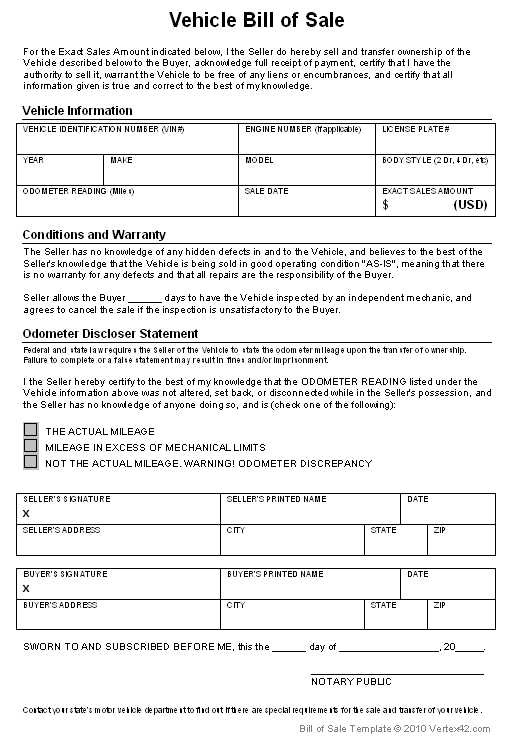
Creating a vehicle sale receipt is a simple yet crucial task when transferring ownership of a vehicle. A well-structured receipt protects both the seller and the buyer, ensuring that all necessary details are documented clearly. To help you draft a reliable template, include these key elements: the date of sale, vehicle identification number (VIN), make, model, year, and odometer reading at the time of sale. Additionally, clearly outline the sale price and payment method, specifying any terms of the transaction.
Start with Seller and Buyer Information
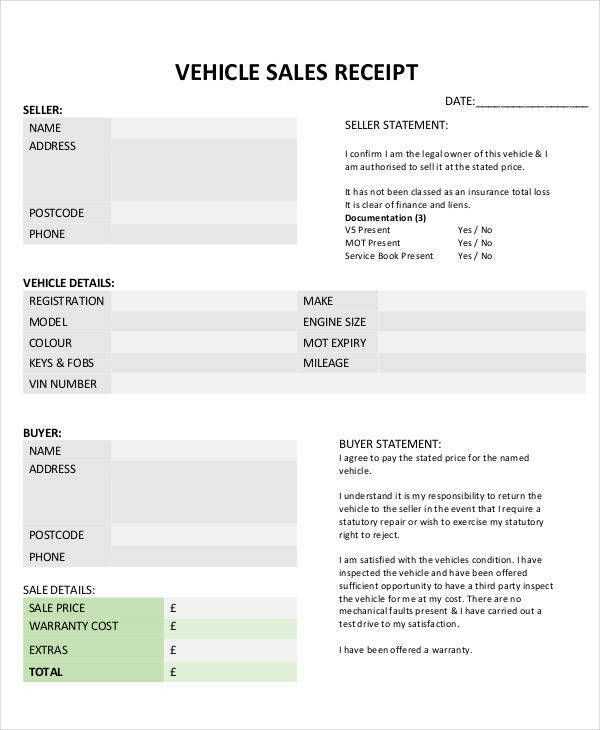
Include the full names and addresses of both the seller and the buyer. Make sure to list any other identifying details, such as contact numbers or email addresses, to avoid confusion later on. This establishes the identities of all parties involved and ensures the document can be used for reference if needed in the future.
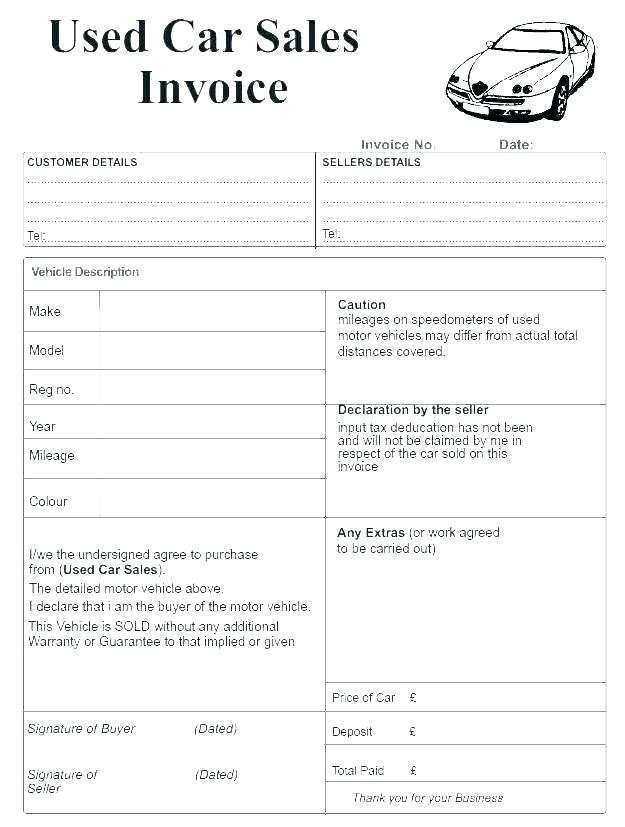
Provide Vehicle Details
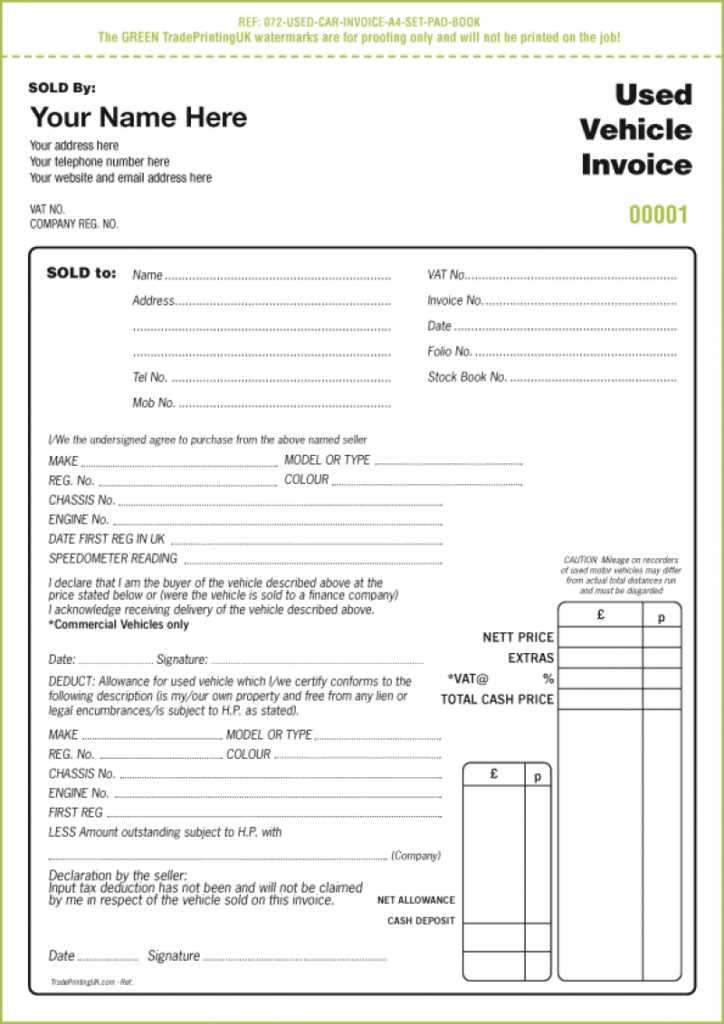
Next, list the vehicle’s specifications such as the VIN, make, model, color, and year. The odometer reading is a critical piece of information that should be noted accurately to reflect the vehicle’s condition at the time of sale. Having these details in the receipt confirms that both parties agree on the specifics of the vehicle being transferred.
Include Payment Terms
Clarify the agreed sale price and how the transaction will be completed. Whether paid in full, financed, or through installments, including the payment method–such as cash, check, or bank transfer–is necessary for record-keeping. If the buyer is making a partial payment, mention the outstanding balance and terms of payment.
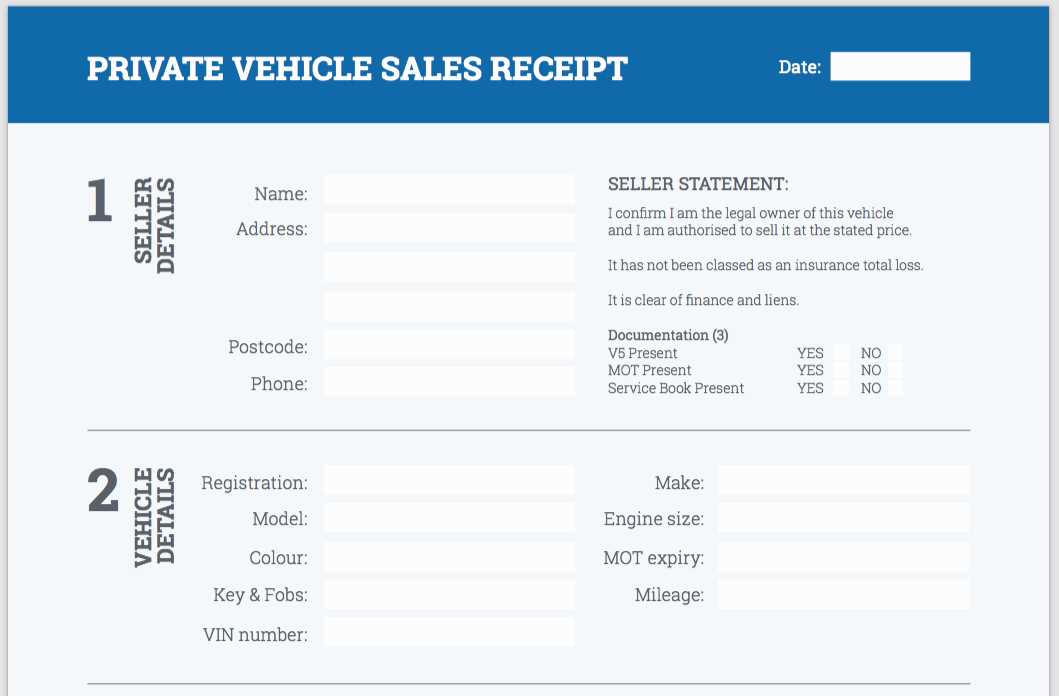
Signatures
Finally, both parties should sign the receipt to acknowledge the transaction. Each signature confirms that the vehicle was sold as described, with payment made according to the terms outlined. It’s also helpful to provide space for a witness signature if required in your jurisdiction.
